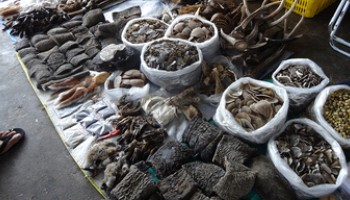This means that nearly 3,500 tigers were killed by poachers and traffickers, and that’s just what’s being stopped by police. An exponential amount more is making it through their grasp or else there wouldn’t be a market for such trade.
“While habitat loss, poor land use and management and conflict with humans pose pressures to tigers, poaching and illegal trade are currently the foremost causes threatening the long-term survival of this species,” the TRAFFIC report said.
As it stands, tigers are one of the most severely endangered species on Earth, with less than 5,000 believed to still be in the wild, down from 100,000 at the beginning of the 20th century.
“It’s an ominous development for the Critically Endangered tiger and a cautionary tale for all tiger subspecies. There’s never been a greater urgency to intensify the fight against wildlife crime in all range states," TRAFFIC’s Senior Wildlife Crime Analyst Ramacandra Wong said.
Despite that, poaching and trafficking of the big cats was slowly rising, with 2016 being one of the most deadly years, with more than 319 tigers confiscated from traffickers in Thailand alone. The poaching and trafficking which TRAFFIC has monitored largely took place over a belt of country stretching from India through south-east Asia, China and Russia.
Much of the demand for tiger parts comes from traditional Chinese medicine, which holds that tiger parts can cure a myriad of illnesses. However, the simple allure of owning a live creature, or its pelt, teeth or claws has also driven the trade.
“The evidence clearly shows poaching and illegal trade are not temporary threats. Unless we want to watch wild tigers wiped out in our lifetime, immediate and time-bound actions must be a priority,” said Kanitha Krishnasamy, Director for TRAFFIC in Southeast Asia.






